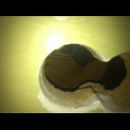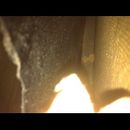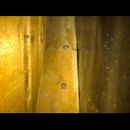Wall insulation questions: Cellulose vs. rigid foam
After 10 years being in my cold 1944 house (in Montreal), I’m looking to finally add some wall insulation. My initial thought was to remove the existing old siding and add 2 inches of XPS rigid foam, then vinyl siding over top. I’ve had many quotes and the problem is that my current roof overhangs are only 2 to 3 inches, so any thickness I add will require me to extend the roofs on most sides. as you can imagine this can get expensive!
The second option I was thinking of was to blow in Cellulose from the outside, the problem is that i’m not sure if my wall structure is ideal to support it, If you look at the pictures attached, basically where the 2 red arrows are, there is nothing in the wall, and between the 2 empty cavities is a layer of tar paper (blue arrow), and although the blue print shows gyplap and tar paper, it is really only tar paper with the gylap fastning the tar paper at certain sections. there are 3 other pics showing the inside of the wall. Do you think it’s possible to blow in cellulose? my concern is that it would blast through the tar paper and into the second cavity, if it did, would this be an issue? does this tar paper act as a vapor barrier? do I need a vaper barrirer?
anyway, if you guys have any ideas on how I can go about insulating these walls without it costling and arm and leg, I would really appreciate the advise!
note that I plan on redoing my siding either way, so doing it from the outside is ideal!
Thanks
GBA Detail Library
A collection of one thousand construction details organized by climate and house part













Replies
Insulationnoob,
First of all, can you tell us your name? (I'm Martin.)
I'm unfamiliar with the term "Gyplap," so I looked it up. Evidently it's a brand name for a type of gypsum sheathing.
I'm confused by your description, but it seems to me that your empty stud cavities can be filled with dense-packed cellulose. What negative outcome are you worried about if you insulate with cellulose? Even if the "second cavity"-- the air space directly under your interior plaster -- is compressed or filled with cellulose, so what?
If you have any doubts about the cellulose option, you should contact an experienced installer of cellulose insulation.
All of that said, I recommend installing a continuous layer of exterior rigid foam. Either polyiso or EPS would be a better choice than XPS from an environmental perspective. (For more information on this issue, see "Choosing Rigid Foam.") One good trick for extending roof overhangs is to install custom-made (wide) metal drip edge made from of heavy factory-painted sheet metal.
HI Martin,
Names Patrick! Thanks for the answer!my worry about the second cavity is whether the tar paper acts as some sort of vapor barrier, mainly concerned about a moisture in the wall! I've been searching for an experienced installer, however you'd be amazed at how many contracters know very little about moisture! I will most likely go the rigid foam route! do you think there should be a wrap on the house at all, or would the rigid foam be ok directly over the sheating?
Patrick,
As Peter Yost mentioned, asphalt felt is a smart vapor retarder, and I don't think it will cause problems in your wall assembly.
Every wall is required by code to have a water-resistive barrier (WRB). This is usually plastic housewrap, but in some cases you can use rigid foam as the WRB. For more information on this issue, see these two articles:
"All About Water-Resistive Barriers"
"Using Rigid Foam As a Water-Resistive Barrier"
Hi Martin,
Thanks for the info!
My other Idea has been to just had a mini split on each floor (currently heating with baseboards) so rather than keep the heat in with insulation, I would add more efficient heat. though I assume this wont be nearly as confortable as proper insulation! but it will be alot less expensive than insualting.
Two responses:
1. is the tar paper a vapor retarder? There are many different formulations of "tar paper" but in general this material probably acts as a Class III vapor retarder, and probably also variable with moisture content: around 5 perms when dry and as high as 60 perms when wet. BUT, really hard to say for a material as old and as "unknown" as your situation.
2. can you just do cavity fill with cellulose? Well, that is linked to number 1 above: in your climate, having only a Class III vapor retarder with air-permeable cavity fill of cellulose is likely to result in significant potential for condensation on your structural sheathing.
It does depend on just how "moist" your home is during the winter. And it depends on the safe carrying capacity of your cavity fill insulation and the exterior sheathing. Sheathing boards as you have and cellulose both have pretty decent hygric capacity, so you may be ok. But it is a hygrothermal balance question and lots of variables.
One solution is to consider using a vapor retarding paint/primer on the interior of your exterior walls.
And if you are cold, it is likely just as related to your overall airtightness as it is the lack of wall insulation.
Peter
Hi Peter,
Unfortunately I don't know what the Tar paper is made of at the moment! I'm definitely working on the air tightness of the house, Over the last couple of years I've repainted most of the interior, so not looking to repaint :) honestly not sure how moist my house is, does feel very dry in the winter! but I do use a dehumidifyer in the basement in the summer!
The first question is the asbestos siding call for in the original drawing currently on the house?
I like the idea of filling the cavities with cellulose while it is not enough to get the wall up to today’s code it will be infinitely better than your current wall. Be certain no knob and tube wiring is still in your walls before insulating.
When you have the siding off add a layer of house wrap but no exterior foam.
Walta
Hi Walter,
Yes unfortunately the asbestos remains, but I will have it removed when doing the siding.
no nob and tube wiring thankfully!
>”You can get R27 @ 2" foil backed for outside radiant heat,”
About the best you can do in foil faced insulation is around R13 for 2” foil faced polyiso. You’re not going to find 2” thick foil faced foam insulation rated R27.
80,000 PSI is approximately a mild carbon steel. I’m assuming you mean you’ve tested your hemp fiber in tension, but can you provide some actual data documenting the testing? The strongest fiber I’m aware of in tension that is in commerical use is ultra high molecular weight polyethylene, commonly sold under the brand name Dyneema.
Bill
At 75 years old I think it would be smart to replace any remaining original wiring before you insulate.
Walta
Side note--that's some slick drafting. I imagine a fair share of coffee and cigarettes were consumed putting that on paper.